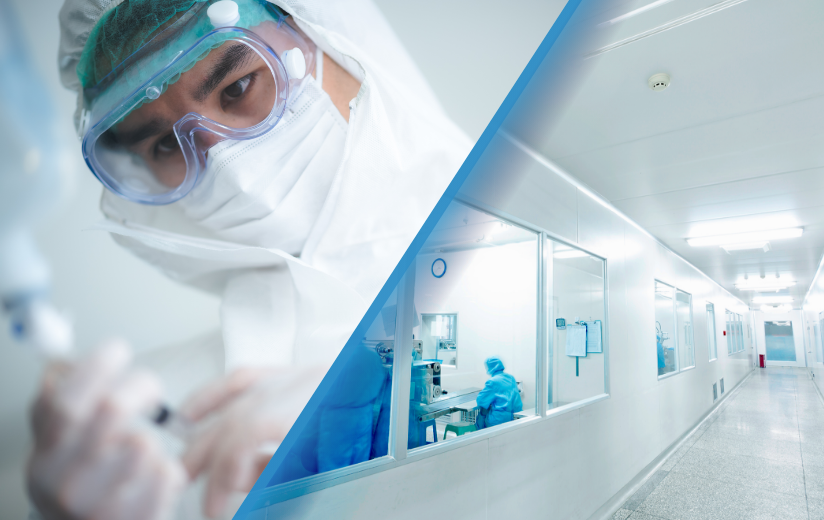Annex 1 is the update to EU GMP for the manufacture of sterile medicinal products (although in some instances manufacturers of non-sterile products are required to refer to applicable sections and explain how these have been incorporated).
Annex 1 takes into account process improvements and technological advancements, encouraging their adoption. The expanded document contains a strong focus on a formal and comprehensive contamination control strategy (CCS). The purpose of the CCS: to identify & control all vectors for microbial, particulate and pyrogen contamination to ensure finished product meets the required standard. The implementation of Annex 1 must be founded in the principles of quality risk management (QRM) and ensure consistent results through: demonstrable competency of personnel, qualified oversight and continuous verification of processes.
Annex 1 demands a holistic CCS to ensure facility design, operational procedures, equipment and systems function cohesively throughout the product life cycle. In this way Annex 1 re-defines quality management expectations and a formal document detailing a site-wide strategy is now a requirement; this document is to function as a traceable means for understanding and reviewing the machinations of the operational facility. Of course a CCS is both extensive and diverse and must be constantly supported and improved upon as part of QRM through continual monitoring, trending and corrective or preventative action.
Mastering Cleaning & Disinfection
Annex 1 specifically acknowledges best practice by clarifying that cleaning and disinfection are separate and equally important processes aiming to accomplish different objectives. AGMA expertise in cleaning and disinfection is unsurpassed, AGMA products allow your business to meet the revised standards introduced by Annex 1.
Cleaning in Annex 1 is defined as “ a process for removing contamination e.g. product residues or disinfectant residues” (1). AGMA manufactures low-foaming, surface friendly Neutral Detergent in cleanrooms, in the UK. AGMA Neutral Detergent is formulated and manufactured in a way that means you can always satisfy section 5.4 of Annex 1:
“5.4 The cleaning process should be validated to be able to:
- Remove any residue or debris that would detrimentally impact the effectiveness of the disinfecting agent used.
- Minimise chemical, microbial and particulate contamination of the product during the process and prior to disinfection.” (1)
AGMA Neutral Detergent always comes with appropriate certification e.g analysis, conformity, irradiation etc; and is available in various formats and volumes: Sterile, double-bagged, wipes and fluid. This means you can comply with section 4.35 of Annex 1:
“4.35 Disinfectants and detergents used in grade A and grade B areas should be sterile prior to use. Disinfectants used in grade C and D may also be required to be sterile where determined in the CCS. Where the disinfectants and detergents are diluted / prepared by the sterile product manufacturer, this should be done in a manner to prevent contamination and they should be monitored for microbial contamination. Dilutions should be kept in previously cleaned containers (and sterilized where applicable) and should only be stored for the defined period. If the disinfectants and detergents are supplied “ready-made” then results from certificates of analysis or conformance can be accepted subject to successful completion of the appropriate vendor qualification.” (1)
Disinfection is defined by Annex 1 as “the process by which the reduction of the number of microorganisms is achieved by the irreversible action of a product on their structure or metabolism, to a level deemed to be appropriate for a defined purpose” (1). Regarding disinfection, all AGMA disinfectants are BS EN tested, with efficacy data available upon request.
Simplifying Chemicals and Processes
AGMA recommend avoiding unnecessary chemicals and complicated processes by taking a simple, yet highly effective approach which supports your compliance with Annex 1 and streamlines your CCS:
- Clean with Neutral Detergent
- Disinfect with IPA / DE & Zyceine
- Rinse with WFI quality water
4.33 The disinfection of cleanrooms is particularly important. They should be cleaned and disinfected thoroughly in accordance with a written programme. For disinfection to be effective, prior cleaning to remove surface contamination should be performed. Cleaning programmes should effectively remove disinfectant residues. More than one type of disinfecting agent should be employed to ensure that where they have different modes of action, their combined usage is effective against bacteria and fungi. Disinfection should include the periodic use of a sporicidal agent. Monitoring should be undertaken regularly in order to assess the effectiveness of the disinfection programme and to detect changes in types of microbial flora (e.g. organisms resistant to the disinfection regime currently in use).
4.34 The disinfection process should be validated. Validation studies should demonstrate the suitability and effectiveness of disinfectants in the specific manner in which they are used and on the type of surface material, or representative material if justified, and should support the in-use expiry periods of prepared solutions.” (1)
At AGMA we have been formulating and manufacturing bespoke chemical solutions for over 55 years. We are here to support your business now and in the future with high quality products, available reliably, with full traceability and supporting documentation.
All of our products which are designed for use in a cleanroom environment are:
- Expertly manufactured in cleanrooms in the UK
- Produced using WFI quality water, which we also manufacture in the UK
- 0.2 micron filtered
- Available sterile
Discover AGMA products, download our brochure.


